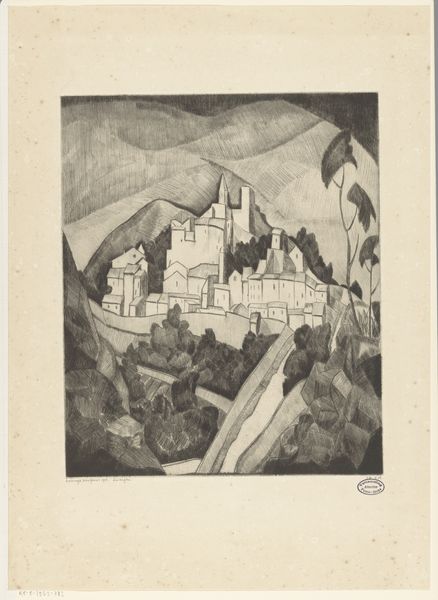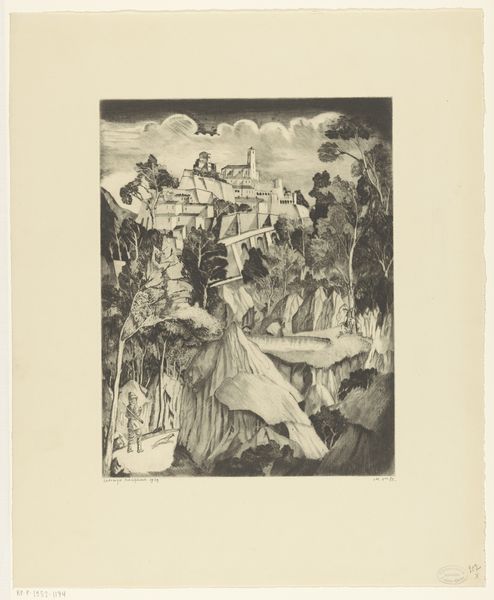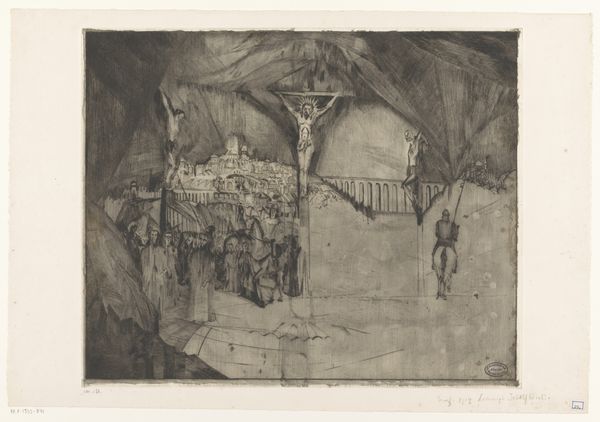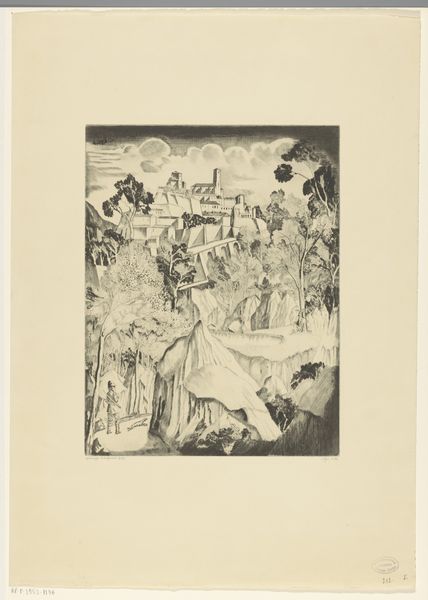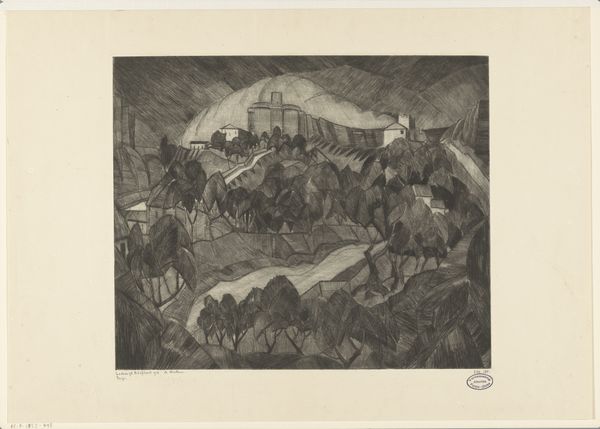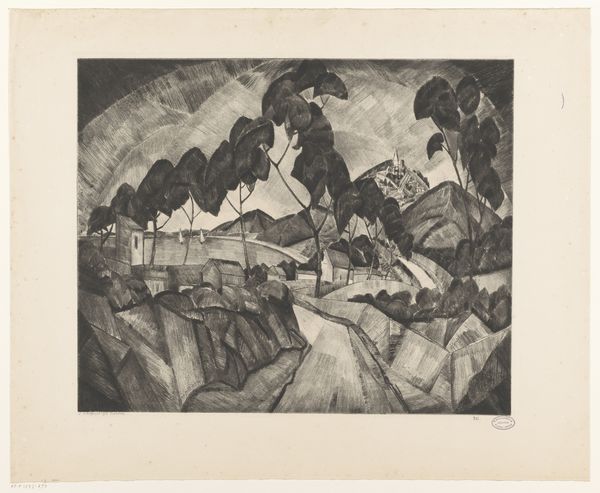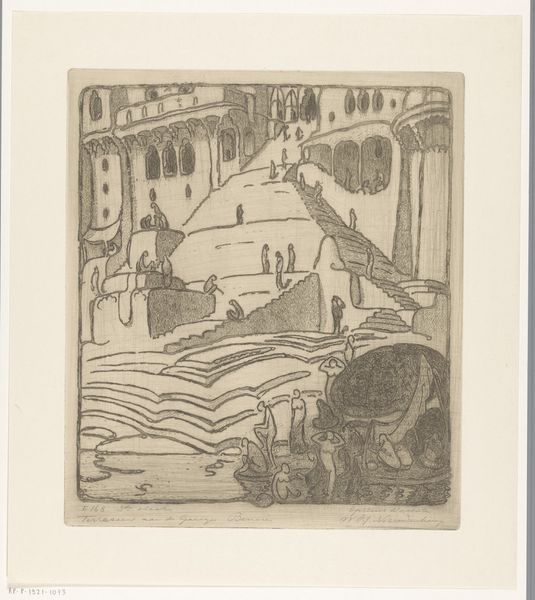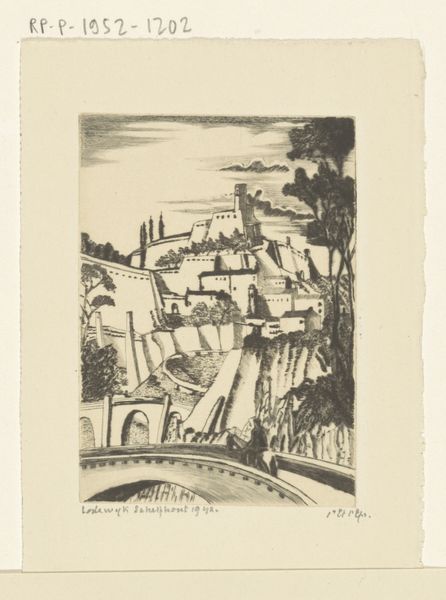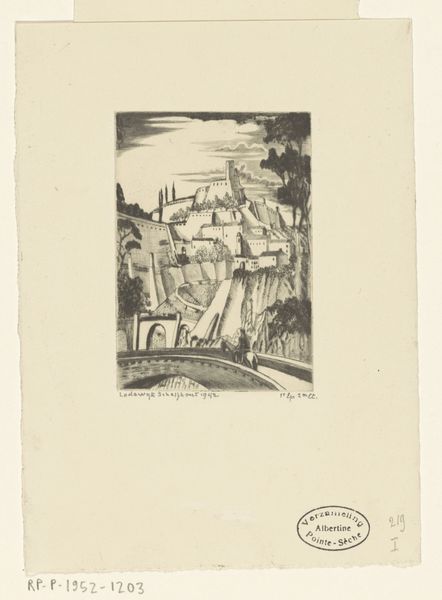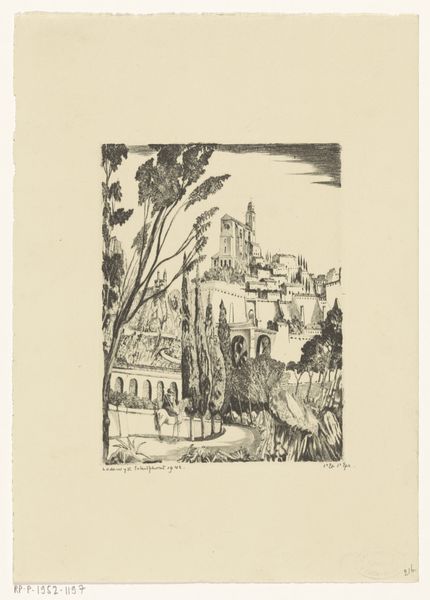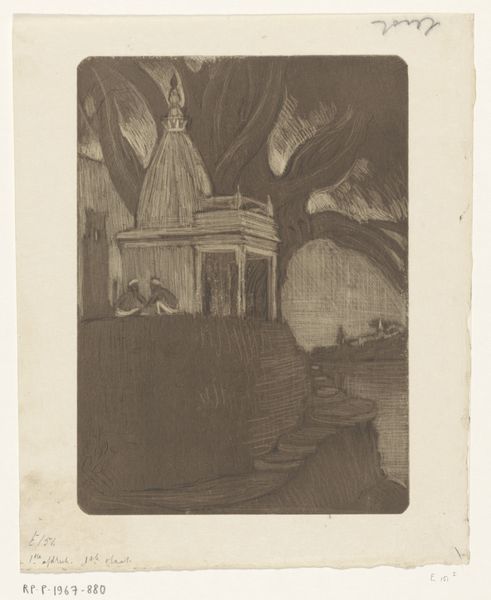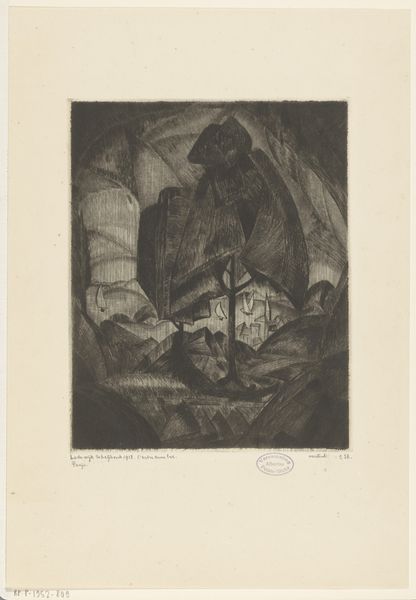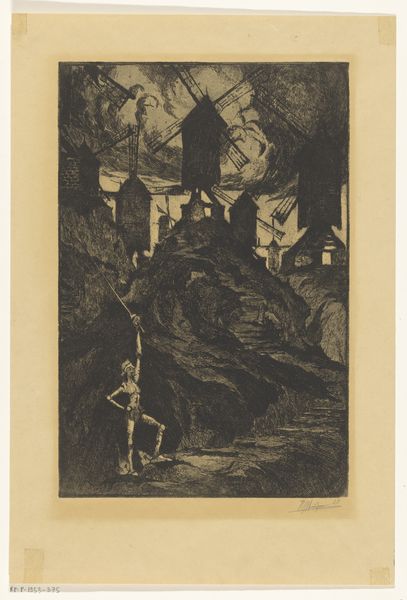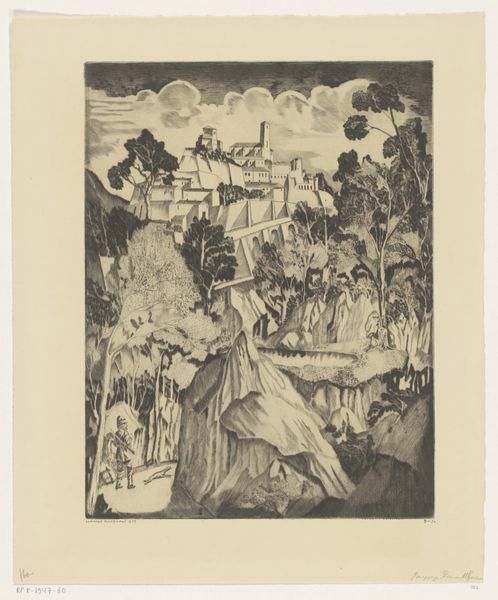
print, etching
#
art-nouveau
# print
#
etching
#
landscape
#
geometric
#
line
#
cityscape
Dimensions: height 378 mm, width 314 mm
Copyright: Rijks Museum: Open Domain
Editor: This etching, "Les Angles I" by Lodewijk Schelfhout, created between 1912 and 1913, has such a striking, almost severe feel to it, doesn't it? The way the artist uses lines to create such sharp angles…it’s a little intimidating. How do you interpret this work? Curator: It's fascinating to consider "Les Angles I" in the context of its time. Notice the heavy use of geometric shapes to create the cityscape; the overall composition hints at a departure from traditional landscape painting toward more abstracted forms of representation, and reveals the changing attitudes toward urbanization at the time. The lines are clearly a focal point of this piece: Why do you think Schelfhout chose to emphasise lines? Editor: Maybe to capture the rigid structure of a town nestled into the harshness of the mountain? To show that humanity is imposing itself onto the landscape? Curator: Exactly! The high-contrast etching technique itself was becoming a medium for social commentary at this time. Schelfhout uses this contrast, the harsh lines, to give a perspective of industry in society, and humanity shaping nature. He's trying to convey how urban development can feel aggressive, but also structured and powerful. Also note how his choice of eliminating colors creates an industrial perspective to the landscape, doesn't it? Editor: Oh, that's a good point! Without the softening influence of colour, the angles and shapes do seem much more assertive. I didn't realize how much the printmaking process and Art Nouveau style were being used to comment on society like that! Curator: Yes, it's crucial to recognize that art rarely exists in a vacuum. This piece is not just a cityscape but a reflection of broader social and cultural anxieties and attitudes. Editor: This etching offers a lot more to consider. I came in with an assumption that the focus was line or visual structure but missed entirely any historical subtext. Thanks for this historical lesson.
Comments
No comments
Be the first to comment and join the conversation on the ultimate creative platform.
